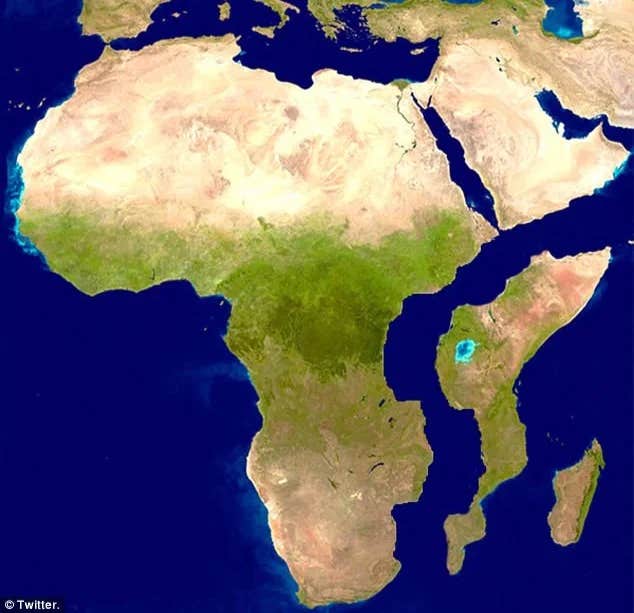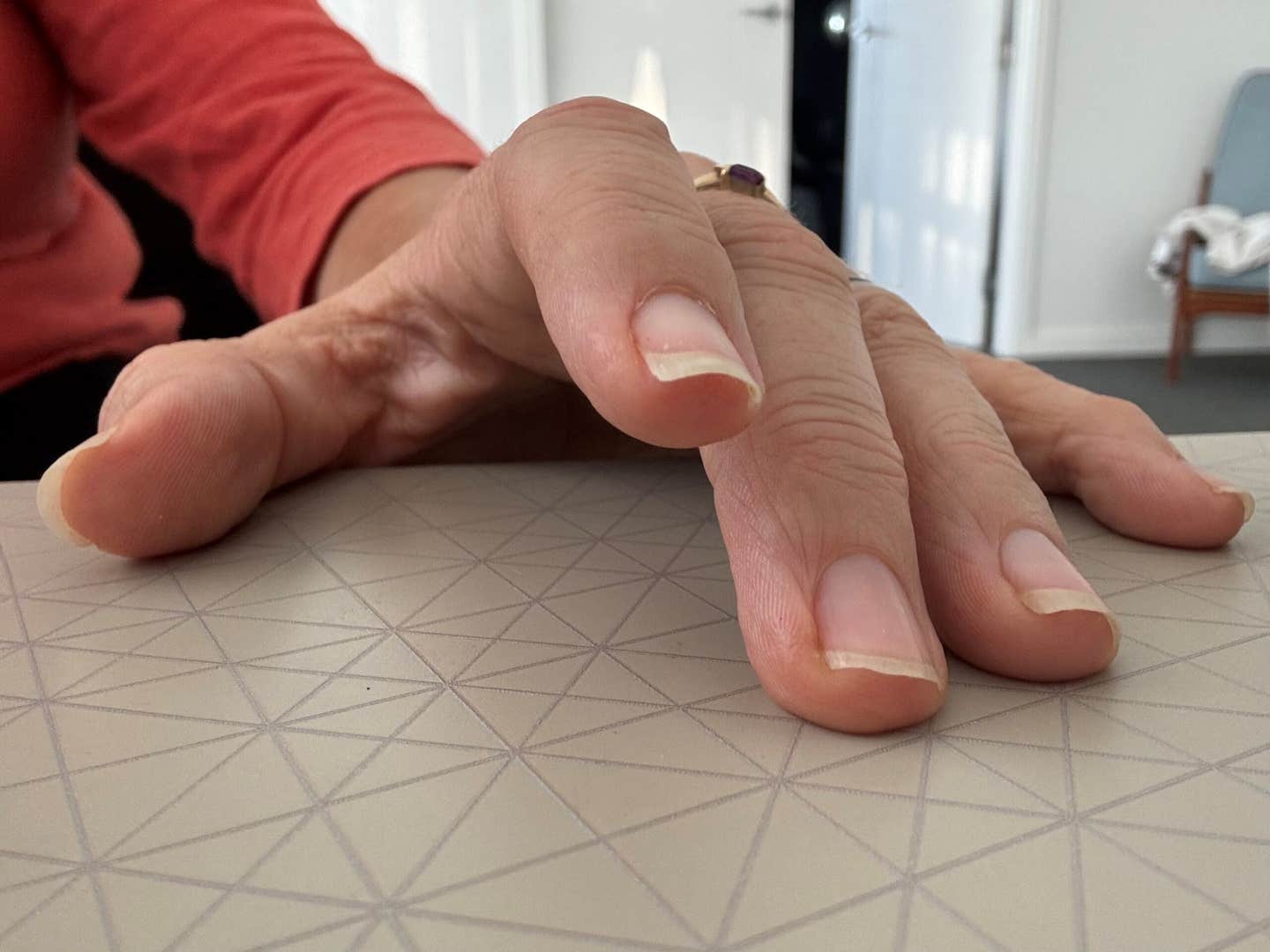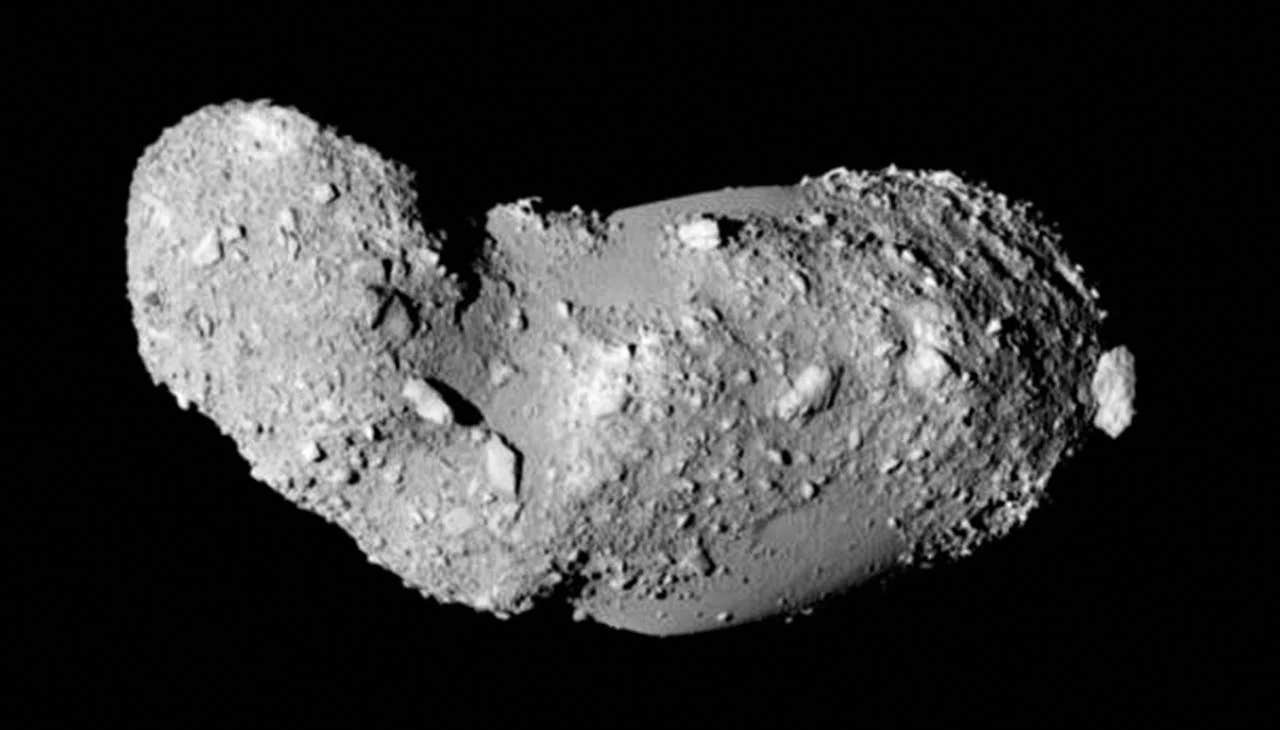Geophysicists reveal the dawn of Earth’s sixth ocean
In the vast deserts of Ethiopia, a remarkable phenomenon has been quietly unfolding since 2005—an extraordinary 35-mile-long crack

A large crack, stretching several miles, made a sudden appearance recently in south-western Kenya. This is what Africa could look like in millions of years. (CREDIT: CC BY-SA 3.0 / Twitter)
In the vast, serene deserts of Ethiopia, something remarkable has been happening since 2005—a 35-mile-long crack, known as the East African Rift, has been quietly emerging. But this is more than just an interesting geological feature; it’s a phenomenon with the potential to reshape political boundaries, economic landscapes, and the geography of our planet. This rift could even lead to the creation of Earth's sixth ocean.
The Earth's tectonic plates—massive pieces of the Earth's crust that drift on the semi-fluid mantle beneath—are constantly in motion. These plates have played a key role in shaping our planet, responsible for the formation and breakup of supercontinents over millions of years.
What’s happening now in East Africa, however, is especially significant. The Somalian tectonic plate is gradually separating from the larger Nubian tectonic plate, something not seen on this scale since South America and Africa split apart hundreds of millions of years ago.
This shift is monumental, and its evidence comes from an in-depth study on the separation dynamics between these two tectonic plates. Published in the prestigious journal Earth and Planetary Science Letters, this study reveals that the plates are slowly drifting apart, though at a pace of just a few millimeters per year.
So, what does this mean for Africa's future? The implications are astounding, with far-reaching effects on both the region's geology and its socio-economic landscape. For landlocked nations like Ethiopia and Uganda, this shift could mean the creation of new coastlines, turning these countries into bustling hubs of trade and commerce.
Related Stories
The potential for economic growth in these regions is immense, offering opportunities that were previously unimaginable.
Marine geophysicist and University of California professor emeritus, Ken Macdonald, explains the significance: "The Gulf of Aden and the Red Sea will flood over the Afar region and into the East African Rift Valley, giving rise to a new ocean. Consequently, this part of East Africa will evolve into its own distinct continent."
This isn’t just a geographic shift; it’s a transformation that will profoundly alter the region’s ecology. Areas that are now arid and desolate could one day teem with marine life as the new ocean forms. Human settlements will have to adapt to these changes, facing both challenges and opportunities as new coastlines develop.
However, it's important to keep in mind that this transformation won’t happen overnight. The complete separation of the African continent and the creation of a new ocean will likely take another 5 to 10 million years.
This timeline serves as a reminder that nature operates on a scale far beyond our lifetimes. While we may not witness the final stages of this transformation, it’s a powerful example of how dynamic our planet truly is.
This ongoing shift is a reminder that Earth’s surface, though it may seem solid and unchanging, is in a constant state of flux. The birth of a new ocean and the reshaping of a continent are just parts of Earth's ever-evolving story—a story that we, as inhabitants of this planet, are fortunate enough to observe and study.
Note: Materials provided above by The Brighter Side of News. Content may be edited for style and length.
Like these kind of feel good stories? Get The Brighter Side of News' newsletter.
Joseph Shavit
Head Science News Writer | Communicating Innovation & Discovery
Based in Los Angeles, Joseph Shavit is an accomplished science journalist, head science news writer and co-founder at The Brighter Side of News, where he translates cutting-edge discoveries into compelling stories for a broad audience. With a strong background spanning science, business, product management, media leadership, and entrepreneurship, Joseph brings a unique perspective to science communication. His expertise allows him to uncover the intersection of technological advancements and market potential, shedding light on how groundbreaking research evolves into transformative products and industries.



